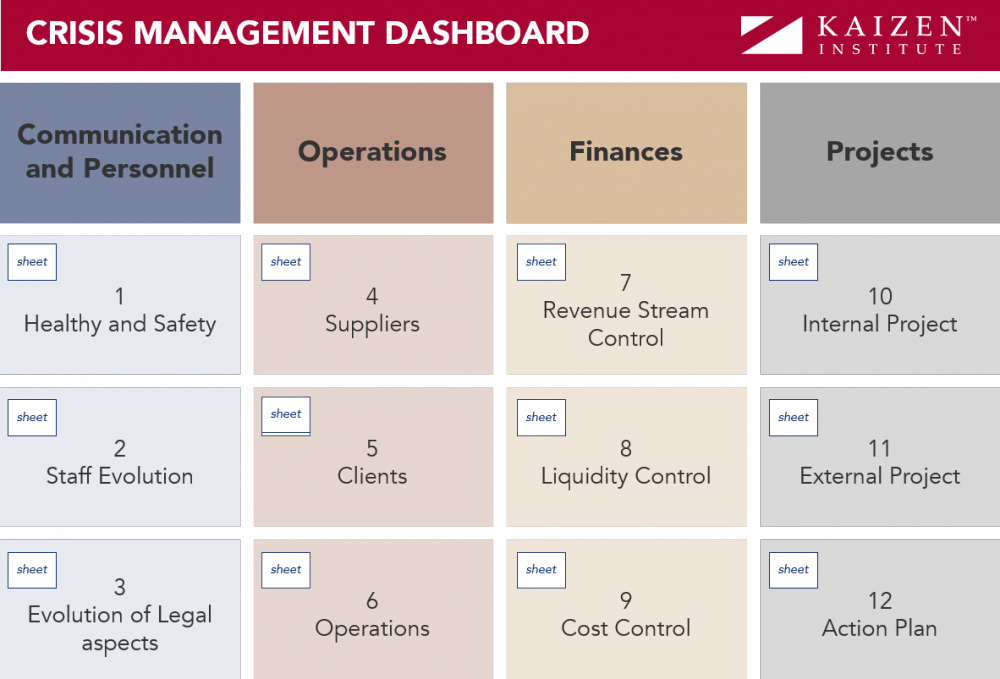With the current pandemic caused by Covid-19, most companies have been forced to change their current paradigm and adapt to a new reality instantaneously. The digital era, where people can work together despite being physically distant has arrived earlier than expected and with no time to set up, how can companies ensure that this change in paradigm is done efficiently, without losing quality and team motivation?
Remote daily management
Team leaders who have limited experience managing remote teams are facing the challenges of keeping track of their teams work plans and are encountering more misalignment due to reduced communication and further isolated working. To tackle these complexities, time must be set aside to connect and discuss as a team any constraints that people may be facing along with sharing achievements.
Studies have shown that 71% of managers consider meetings unproductive and so it is imperative to put some thought on the content to be addressed with the teams. A Daily meeting with a structured agenda that includes work plan, performance indicators and improvement cycle will help to closely manage the ongoing work as well as the teams’ motivation and energy. Tools such as Microsoft Teams, Miró or Trello (which can be integrated into Teams) are a great way for leaders to build their digital boards and manage meetings remotely. For those whom preferer to use the tools they already had, these meeting elements can be created on Excel or Powerpoint, with the team leader sharing his/her screen. Independently of the tool being used, leaders should share the meeting agenda with the team and encourage team members to participate orderly, creating a dynamic environment where everybody gets involved.

Example of Virtual Team Board
Remote project management
Businesses need to improve continuously to stay competitive and strengthen their market position. A solid project management processes need to be put in place to ensure the implementation of these improvements are efficient and sustainable. With that said, recent reviews have shown that 41% of businesses still do not use standard project management practices, which leads to 69% of projects overspending the budget and 49% not delivering the expected benefits. How can teams be productive in delivering these projects remotely?
To implement improvement initiatives, usually, we preach that you must go to the shop floor and see the issues as they occur. As this may not be possible given the current situation, it should be the priority of the project manager to gather all the data available to support decision making. During the workshop sessions to keep the team focused and motivated, creating visual frameworks with the digital tools available, can help guarantee that the project follows a structured approach. Giving control of the screen to all participants, so that they can interact as they would do in a physical workshop, should promote a dynamic environment and create focus. To help share ideas, it may be easier to sketch them rather than explaining verbally and that can be done using different sketch apps such as auto draw or sketchpad. Teams can also take advantage of the virtual work plans to assign tasks to be followed-up on for the next workshop.

Example of structured framework for workshops and visual support tools
To manage the various on-going initiatives, a Mission Control with the leaders should help keep the momentum. The Mission Control should have a structured agenda, the status of each initiative with the associated performance indicator, the last planner to manage the actions for the next three to four weeks and an improvement cycle. These meetings should occur once a week, with each leader preparing the main developments and roadblocks to be shared. By sharing the progress of the projects, the business will be certain that all teams are moving in the same direction and it will allow project leaders to learn from each other’s implementation.

Example of virtual mission control room
Managing the transition
During a crisis, businesses must be able to effortlessly adapt and change in response to new developments in different areas, from the government to clients. Top management must actively follow the daily news updates and proactively take steps to maintain the relationship with suppliers and customers through the implementation of preventive measures. However, managing this whilst trying to address all of the stakeholders is a complex task.
Creating a digital space – Crisis War Room -, adapted to the top management’s needs, will help to manage this transition from all fronts. This space should be divided into 4 areas: Communication and Personnel, Operations, Finance and Projects. The Communication and Personnel area should incorporate the laws and standards to take into consideration and a tracker for the personnel working remotely, on-site or unavailable. The Operations area should include the status of suppliers, the status of clients’ operations, impact on current orders in place and the status of internal operations. To keep a close eye on the financial impact, the revenue should be monitored and compared to the original budget and altered budget (after the crisis). Liquidity and cost control should be tracked against a danger zone and a critical value that will help trigger contingency plans. Finally, under projects, a summary of the mission control should be included to maintain an update on the status of projects and any actions necessary.

Example of crisis management dashboard
A strong company culture of standardisation and continuous improvements can truly prove to be an advantage in adverse situations. Training team-mates on skills that will boost their teams’ productivity and streamline project implementation should be a priority to minimise the effects of unplanned changes in the world.
At a time of crisis where processes are changing constantly, If the day-to-day operations are working in a process-oriented approach, managers can dedicate more time to support teams where required.
#business services #culture and organisation
See more on Business Services
Find out more about transformation in this sector
See more on Culture & Organisation
Find out more about improving this business area
